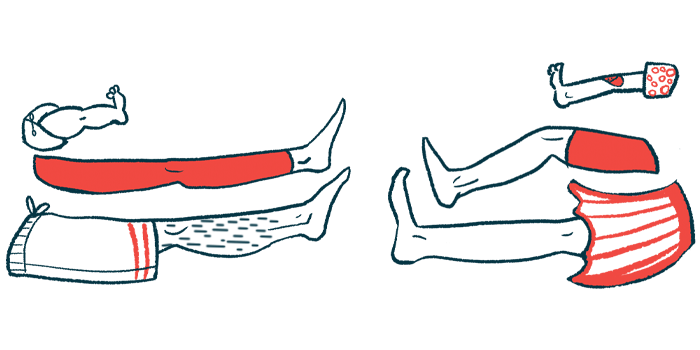Cionic’s Neural Sleeve counters foot drop in small MS study
All 8 patients saw improvements in dorsiflexion, foot inversion

The Neural Sleeve developed by Cionic significantly reduced foot drop, which is a difficulty lifting the foot that often causes people with multiple sclerosis (MS) to drag their toes when they walk.
The lightweight bionic garment is cleared in the U.S. to improve mobility in MS. In a pilot study with eight adults, wearing the apparel on the most affected leg resulted in a significant gain in being able to flex the ankle and a reduction in inversion, which refers to the tendency of the ankle and foot to roll inward.
“It’s encouraging that all participants experienced improvements to two of the key measures that impact safe walking,” Doug Wajda, PhD, an assistant professor at Cleveland State University’s College of Health, said in a press release. Wadja, who is sharing the findings in a poster at the 2024 Consortium of Multiple Sclerosis Centers (CMSC) annual meeting, May 29 to June 1 in Nashville, said the findings suggest the Neural Sleeve may become “a comprehensive technology that can address a wider variety of gait impairments at once.” The poster’s title is “Impact of the Cionic Neural Sleeve on Ankle Kinematics During Gait in Multiple Sclerosis.”
Many people with MS develop foot drop as a result of poor or ineffective nerve communication between the brain and the muscles in the leg and feet. Foot drop makes it difficult to lift the front part of the foot, called dorsiflexion, and can cause the foot to roll inward.
A lift to effects of foot drop
Functional electrical stimulation, which delivers low-energy electrical impulses to nerves to improve their communication with muscles, can help with foot drop caused by neurological conditions like MS. This usually only targets one group of muscles at a time, however.
Cleared by the U.S. Food and Drug Administration to aid people with foot drop and/or leg muscle weakness, the award-winning Neural Sleeve features sensors that track how the body is positioned and which muscles are active in real time to interpret movement.
The Neural Sleeve can predict how a person will move 1/10th of a second before their foot lifts off the ground. Based on this, it delivers software-controlled electrical impulses to activate the right groups of muscles along the leg and thigh at the correct time. Algorithms adjust stimulation patterns to improve walking and leg muscle strength over time.
“In order to address the highly individualized and complex mobility challenges of individuals with neurologic conditions, a flexible technology system that continuously interprets their movement and muscular activity and adapts to their needs is paramount,” said Jeremiah Robison, Cionic’s founder and CEO.
The study, conducted by Wajda and Rebecca Webster, PhD, who runs clinical operations at Cionic, included four men and four women with MS, with a mean age 60.4. The patients were asked to walk at a comfortable pace both with and without the sleeve on their most affected leg.
When they walked without it, the patients had reduced dorsiflexion, by about 9.9 degrees, and some foot inversion (11.8 degrees). The Neural Sleeve significantly increased dorsiflexion by an average of 8.2 degrees over not wearing it, suggesting the patients had an easier time lifting their foot. Inversion was significantly reduced by 5.7 degrees, indicating less inward foot roll.
“Overall, improvements to [dorsiflexion] at heel strike and reductions in inversion during swing were observed in all [eight] participants,” the researchers wrote, adding the Neural Sleeve “offers an active solution to the management of foot drop.”
“These results show the tremendous power of our software-steered neuromodulation array and real-time adaptive algorithms to improve walking for individuals with MS,” Robison said.







